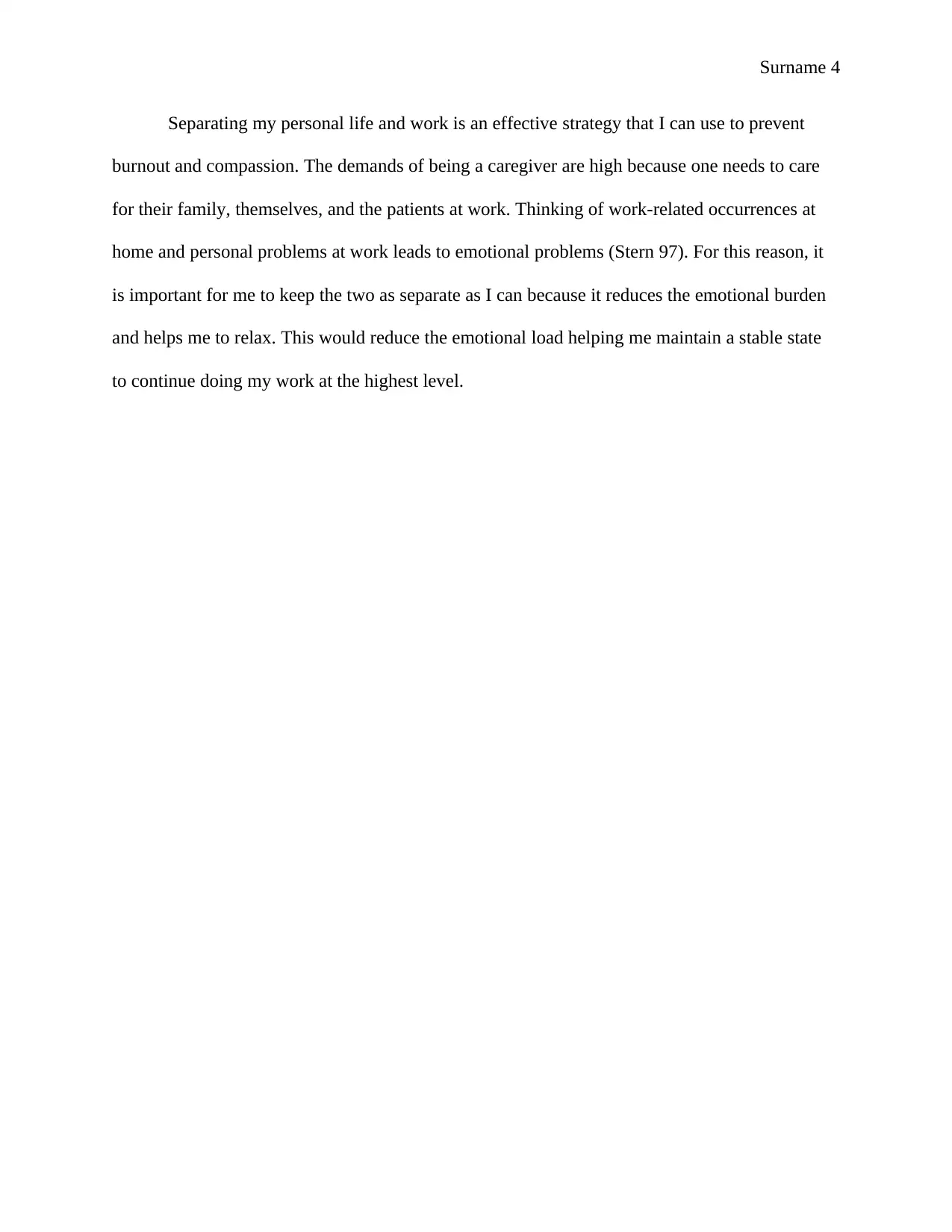Nursing Activity 2: Patient Care and Caregiver Wellbeing Analysis
VerifiedAdded on 2023/06/04
|5
|998
|334
Practical Assignment
AI Summary
This nursing assignment, titled "Activity 2," addresses clinical presentations and appropriate nursing interventions for patients experiencing respiratory difficulties, wound management issues, and pain. It outlines specific interventions such as maintaining optimal patient positioning, providing supplemental oxygen, monitoring skin integrity, and implementing pain relief measures. The assignment also examines the importance of mouth and skin care. Furthermore, the assignment includes a reflection on the challenges faced by palliative care providers and the significance of preventing burnout and compassion fatigue through strategies such as self-reflection, self-care, and maintaining a separation between personal and professional life. The assignment underscores the need for nurses to prioritize their emotional and social wellbeing to effectively care for their patients, referencing key concepts and sources on burnout and compassion fatigue, as well as provides relevant nursing practices.
1 out of 5









![[object Object]](/_next/static/media/star-bottom.7253800d.svg)